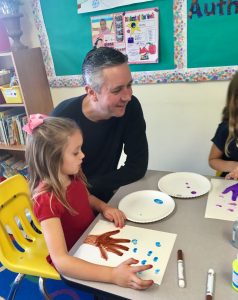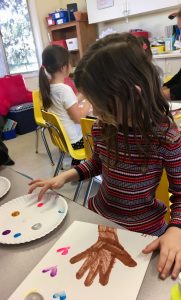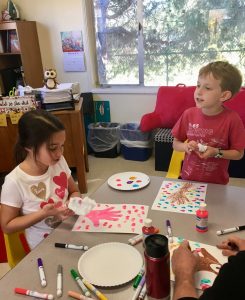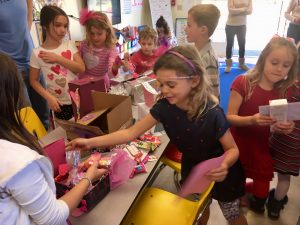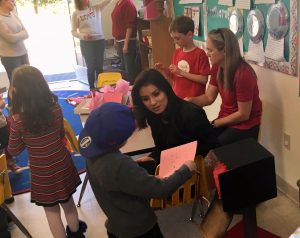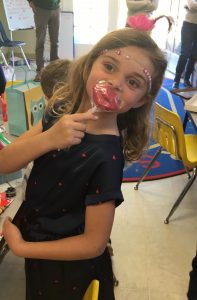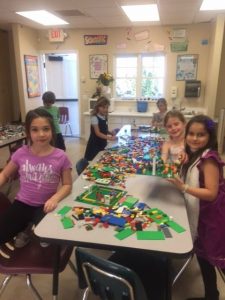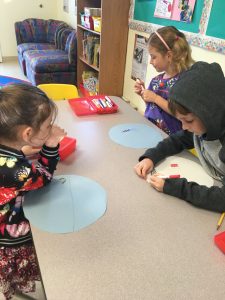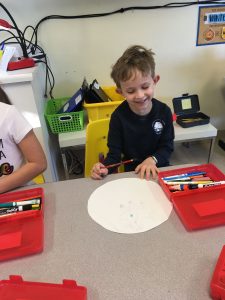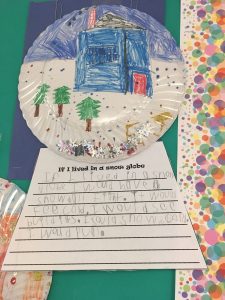The first graders have been learning all about persuasive writing. First, we learned how to differentiate between facts and opinions. We began with some basic examples such as, “The sky is blue” (fact) and “Stanley is the best dog in the whole world” (opinion — however, widely shared in our classroom!) I told the students that they would be working on persuading, or convincing their readers to agree with their opinions on a topic, and the best way to persuade someone of something is to use facts.

We began by reading the book, “Don’t Let the Pigeon Stay Up Late!” by Mo Willems. From Amazon: “Hurrying away to brush his teeth, the pajama-clad bus driver implores readers not to let his feathered friend stay up late. Youngsters are thrust into the role of caregiver as the pigeon attempts to talk his way out of the inevitable, coming up with requests that range from manipulative (I hear there’s a good show about birds on TV tonight. Should be very educational) to cajoling (Y’know, we never get to talk anymore. Tell me about your day-) to classic (Can I have a glass of water?). Meanwhile, the fowl fights yawns and tries to keep his wide eye open, despite a drooping lid. Defying drowsiness to the last, he finally falls asleep, clutching his stuffed bunny tightly under his wing.”
We discussed the pigeon’s opinion (that he should be able to stay up late) and some of the reasons he used to support his opinion. We also identified which reasons were factual and talked about why they better supported his opinion.

Then, I presented our writing topic, telling the students that in the past few years, educational experts have taken a hard look at the effectiveness of homework at all age levels. As a result, our own school has studied and revised our homework policies. I asked, “Should we have homework?” Together, we brainstormed reasons for and against doing homework. Then, we checked to make sure that our reasons were factual. We discovered that sometimes, we need to change our wording to ensure that we are stating facts. For example, when discussing reasons against having homework, one student said, “It’s boring!” Another student replied, “I don’t think it’s boring! That’s an opinion!” We decided that we could turn the opinion “it’s boring” into a fact by saying, “Some people think homework is boring.”
Next, I had the students complete a pre-write in which they recorded at least three reasons for each side of the argument, no matter their personal opinion. This exercise helped them come up with convincing support for their opinion, and helped them understand that we can look at two sides of an argument fairly when we understand the facts behind the argument.

Some of the reasons students had for and against homework
After a rough draft, editing, and revisions, we wrote and published our final drafts today! You may be surprised at how many students think we should have homework.
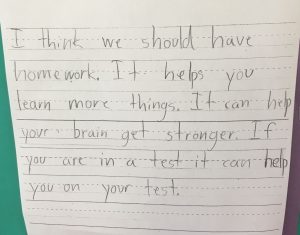
I think we should have homework. It helps you learn more things. It can help your brain get stronger. If you are in a test it can help you on your test.

Homework helps you learn. It gives kids extra practice. It could help your brain get stronger. It is something that you can do after school. Homework helps you learn new stuff.

I think we should not have homework. It’s boring. We have other things to do. I have piano. I also have ice skating.

I think we should have homework. It helps other classmates and people who do it. You will be very educated after. It can sometimes help parents (continued on next photo)

(cont. from previous) know what kids are doing in school.

We should have homework. It helps kids learn things. It helps kids learn more. It helps the mind get smarter.

We should have homework. It helps kids get smarter. It helps kids do something after school. It helps parents know whats going on at school.

I think we should not have homework. Kids should be playing outside because they don’t have homework. Kids have too many other things to do.

We can learn more things. It can help your brain get stronger. It helps parents know what kids learn. We should have homework.

We should have homework. It helps kids learn. It can be fun. It gives kids something to do after school.

I think we should not have homework. Kids should be playing outside. Kids have too many other things to do. Kids should be (continued in next photo)

(cont. from previous) going home to watch T.V.
And there you have it! What do you think?



